Certainly not, especially if using it for (part of) an acoustic XO.I don't feel that 6300hz slope is negative thing.
And sub is tapped horn 12" Ground Zero doing job from 35 to 50hz. One NU4 channel is still free for better tapped horn to 23-46hz. I have one more GZ 15 incher waiting for to get in to service. The bass system works perfectly as it is without any violence but once in my life I would like to experience how the 22hz feels.
Only a half octave TH?! Just how high a Qt driver is it? Ditto the one octave?! since THs are typically 2 - 2.5 octaves.
Nothing much happening with traditional instruments <31.5 Hz, so why not go for the 16 Hz on some pipe organ symphony CDs or even lower for a significant number of movies and presume some music videos also?
I have no idea how Qts works in the equation. I mean for dummies. It seems to be 0.73.
I have just used HR to build tapped horns and there is no qts field or I cannot find it. I've always been wondering what the heck those guys are meaning when they fluently throw in that qts number and I'm totally lost from that point on.
Things I follow in HR is maximum replacement and lengt of horn. And which parameter changes make a reasonable change in responses. HR quite a remarkable software as is Tapped Horn construction.
Now I have the TH which makes most sense. It can play lowest electric bass notes's fundamentals. Other main task is to spot recordings where is 60hz hum or other rumble.
As a results of experiments with that tapped horn it happens to be - for me - the best idea use is as one octave tapped horn. I don't like to hear any of the tapped horn high resonance acoustic peaks. Solving that begs me playing only 1 octave out of the TH. What ever I choose from that tapped horn it will be one octave.
Other reason for using one octave is because my windows and room start to rattle here and there. I have no separate listening room or wife. So I can do what I like in my 6*6 meters living room on my mansion which is to research in practical way about audio and hifi. There is lots of different objects resonating and using only one tapped horn for an octave will allow to control worst resonances without affecting the bass musical fundamentals over 53hz. 15" ground zeros also get easier task because they can be crossed just a tad higher at lower side. I could manage with 1 TH from 20 to 40. But now that I already possess this (even too small )12 incher TH I don't feel taking it apart.
I have just used HR to build tapped horns and there is no qts field or I cannot find it. I've always been wondering what the heck those guys are meaning when they fluently throw in that qts number and I'm totally lost from that point on.
Things I follow in HR is maximum replacement and lengt of horn. And which parameter changes make a reasonable change in responses. HR quite a remarkable software as is Tapped Horn construction.
Now I have the TH which makes most sense. It can play lowest electric bass notes's fundamentals. Other main task is to spot recordings where is 60hz hum or other rumble.
As a results of experiments with that tapped horn it happens to be - for me - the best idea use is as one octave tapped horn. I don't like to hear any of the tapped horn high resonance acoustic peaks. Solving that begs me playing only 1 octave out of the TH. What ever I choose from that tapped horn it will be one octave.
Other reason for using one octave is because my windows and room start to rattle here and there. I have no separate listening room or wife. So I can do what I like in my 6*6 meters living room on my mansion which is to research in practical way about audio and hifi. There is lots of different objects resonating and using only one tapped horn for an octave will allow to control worst resonances without affecting the bass musical fundamentals over 53hz. 15" ground zeros also get easier task because they can be crossed just a tad higher at lower side. I could manage with 1 TH from 20 to 40. But now that I already possess this (even too small )12 incher TH I don't feel taking it apart.
T/S theory peters out at the driver's effective upper [Fhm], lower [Flc] mass corners, so any bandwidth response plot beyond these points are strictly due to [inputted] inductance [mH] and/or mass roll off, with on-line freeware generally just flatlining it:
Fhm = 2*Fs/Qts'
Flc = Fs*Qts'/2 [normally never used]
Qts' = 2*Fs/Fhm
Qts' = Qts + any added series resistance [Rg]: http://www.mh-audio.nl/Calculators/newqts.html
[Rs] = 0.5 ohm minimum for wiring, so may be higher if a super small gauge is used as a series resistor
Fhm = 2*Fs/Qts'
Flc = Fs*Qts'/2 [normally never used]
Qts' = 2*Fs/Fhm
Qts' = Qts + any added series resistance [Rg]: http://www.mh-audio.nl/Calculators/newqts.html
[Rs] = 0.5 ohm minimum for wiring, so may be higher if a super small gauge is used as a series resistor
HR calculates Qts or Qts' based on the inputted driver's Re, Qes, Qms and any added series resistance (Rg). Unfortunately only Qts is displayed in the Driver Parameters, so have to do the calculation to find Qts'.
HR has a TH Wizard, so might want to try it with your driver's specs to see how it compares to what you did.
Agreed, its increasingly out of phase HF 'hash' must be ideally attenuated to -25 dB, but again it's best overall to optimize based on the driver's specs regardless of desired BW, though with inexpensive drivers it may very well be best to severely BW limit them if not using actual measured specs.
HR has a TH Wizard, so might want to try it with your driver's specs to see how it compares to what you did.
Agreed, its increasingly out of phase HF 'hash' must be ideally attenuated to -25 dB, but again it's best overall to optimize based on the driver's specs regardless of desired BW, though with inexpensive drivers it may very well be best to severely BW limit them if not using actual measured specs.
Here is why i use one octave per TH:
specs are:

inputs are:

result is:

I try to avoid that horrific thing above first octave 30-60. And there is something to start with it: huge nice drop from 70 to 90. So usually I cut as digital 60db or more from 50 and let midbasses do their part.
My question asked on dummies behalf is:
In right column of specs is given Rms as kg/second. HR talks Rms being about "newton sec/meter"
Are those the same thing?
Other similar question is about specs' Mms vs. HR Mmd. Are those related?
Sorry to ask in wrong thread.
specs are:
inputs are:
result is:
I try to avoid that horrific thing above first octave 30-60. And there is something to start with it: huge nice drop from 70 to 90. So usually I cut as digital 60db or more from 50 and let midbasses do their part.
My question asked on dummies behalf is:
In right column of specs is given Rms as kg/second. HR talks Rms being about "newton sec/meter"
Are those the same thing?
Other similar question is about specs' Mms vs. HR Mmd. Are those related?
Sorry to ask in wrong thread.
Re Mms, Mmd, yes and using HR's HELP/'FIND' feature makes short work of finding all locations of anything pertinent to HR. 😉
Contact Zolt on the Lowther modification forum on facebook. Here are my PM2A:
Nice to see a member of the Lowther Modification Group. Yes excellent custom made cone, damper, surround, VC, field coil by Zsolt
Its a group of hardcore custom driver makers which focus on Lowther and other fullrange, which also include some woofers.
Attachments
-
 118334305_10158933610698534_5855458095385251462_n.jpg216.5 KB · Views: 102
118334305_10158933610698534_5855458095385251462_n.jpg216.5 KB · Views: 102 -
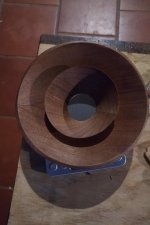 120020548_3249338505119834_898003621000164718_n.jpg38.6 KB · Views: 93
120020548_3249338505119834_898003621000164718_n.jpg38.6 KB · Views: 93 -
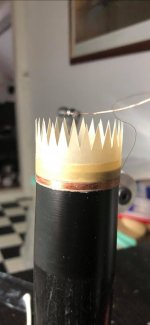 121341685_10159096873248534_1534446013525699417_n.jpg101.5 KB · Views: 89
121341685_10159096873248534_1534446013525699417_n.jpg101.5 KB · Views: 89 -
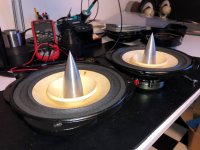 141011985_10159357820983534_1792709376293342445_n.jpg207.4 KB · Views: 98
141011985_10159357820983534_1792709376293342445_n.jpg207.4 KB · Views: 98 -
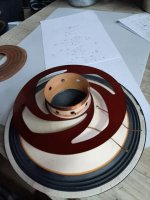 144251465_10208994756541916_5471194049203315402_n.jpg50.6 KB · Views: 92
144251465_10208994756541916_5471194049203315402_n.jpg50.6 KB · Views: 92 -
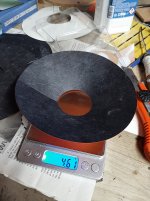 184854147_10209392384002354_1107729563179522235_n.jpg400.1 KB · Views: 90
184854147_10209392384002354_1107729563179522235_n.jpg400.1 KB · Views: 90 -
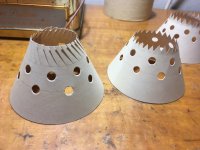 186541784_4768740919819521_7201790436001399896_n.jpg531 KB · Views: 95
186541784_4768740919819521_7201790436001399896_n.jpg531 KB · Views: 95 -
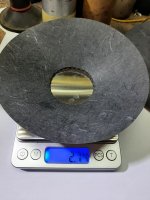 187280834_10209418541736281_1766444310865095822_n.jpg68.7 KB · Views: 93
187280834_10209418541736281_1766444310865095822_n.jpg68.7 KB · Views: 93 -
 187433357_10209418541496275_2749552011931753507_n.jpg77.5 KB · Views: 94
187433357_10209418541496275_2749552011931753507_n.jpg77.5 KB · Views: 94 -
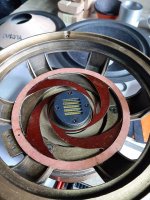 187888970_10209418540456249_3247224292748986011_n.jpg101.2 KB · Views: 103
187888970_10209418540456249_3247224292748986011_n.jpg101.2 KB · Views: 103 -
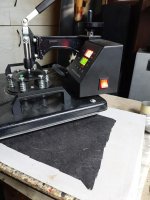 188595050_10209418540976262_7704614065019386534_n.jpg66.5 KB · Views: 86
188595050_10209418540976262_7704614065019386534_n.jpg66.5 KB · Views: 86 -
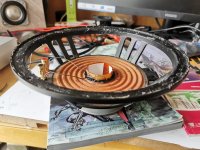 203757738_1676671266055643_1573783495003600968_n.jpg86.7 KB · Views: 90
203757738_1676671266055643_1573783495003600968_n.jpg86.7 KB · Views: 90 -
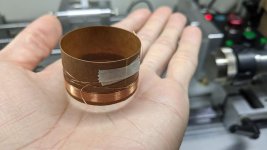 240443611_1713998205452408_267569725296753755_n.jpg33.3 KB · Views: 88
240443611_1713998205452408_267569725296753755_n.jpg33.3 KB · Views: 88 -
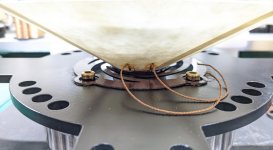 241426650_1722019084650320_2701849690179744574_n.jpg37.6 KB · Views: 81
241426650_1722019084650320_2701849690179744574_n.jpg37.6 KB · Views: 81 -
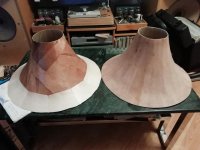 242159103_10220644148120934_383732452163168281_n.jpg50 KB · Views: 92
242159103_10220644148120934_383732452163168281_n.jpg50 KB · Views: 92 -
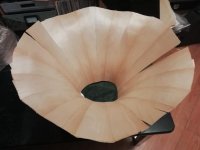 242175374_10220644147120909_5231123668499946757_n.jpg30.2 KB · Views: 87
242175374_10220644147120909_5231123668499946757_n.jpg30.2 KB · Views: 87 -
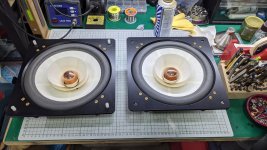 243122415_1738465256339036_824911807269249002_n.jpg409.5 KB · Views: 86
243122415_1738465256339036_824911807269249002_n.jpg409.5 KB · Views: 86 -
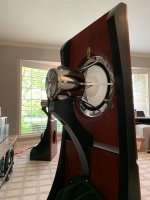 243906618_10227230622899303_6676301223327898860_n.jpg352.4 KB · Views: 104
243906618_10227230622899303_6676301223327898860_n.jpg352.4 KB · Views: 104 -
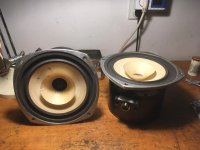 244777086_5228277107199231_3490190040542038393_n.jpg51.6 KB · Views: 89
244777086_5228277107199231_3490190040542038393_n.jpg51.6 KB · Views: 89 -
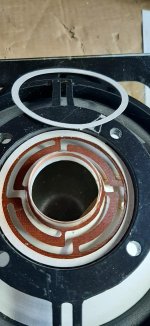 245325338_10209836681229507_6631616818411431029_n.jpg91.1 KB · Views: 87
245325338_10209836681229507_6631616818411431029_n.jpg91.1 KB · Views: 87
- Home
- Loudspeakers
- Full Range
- Smoothest Fullrange driver through the sibilance range.